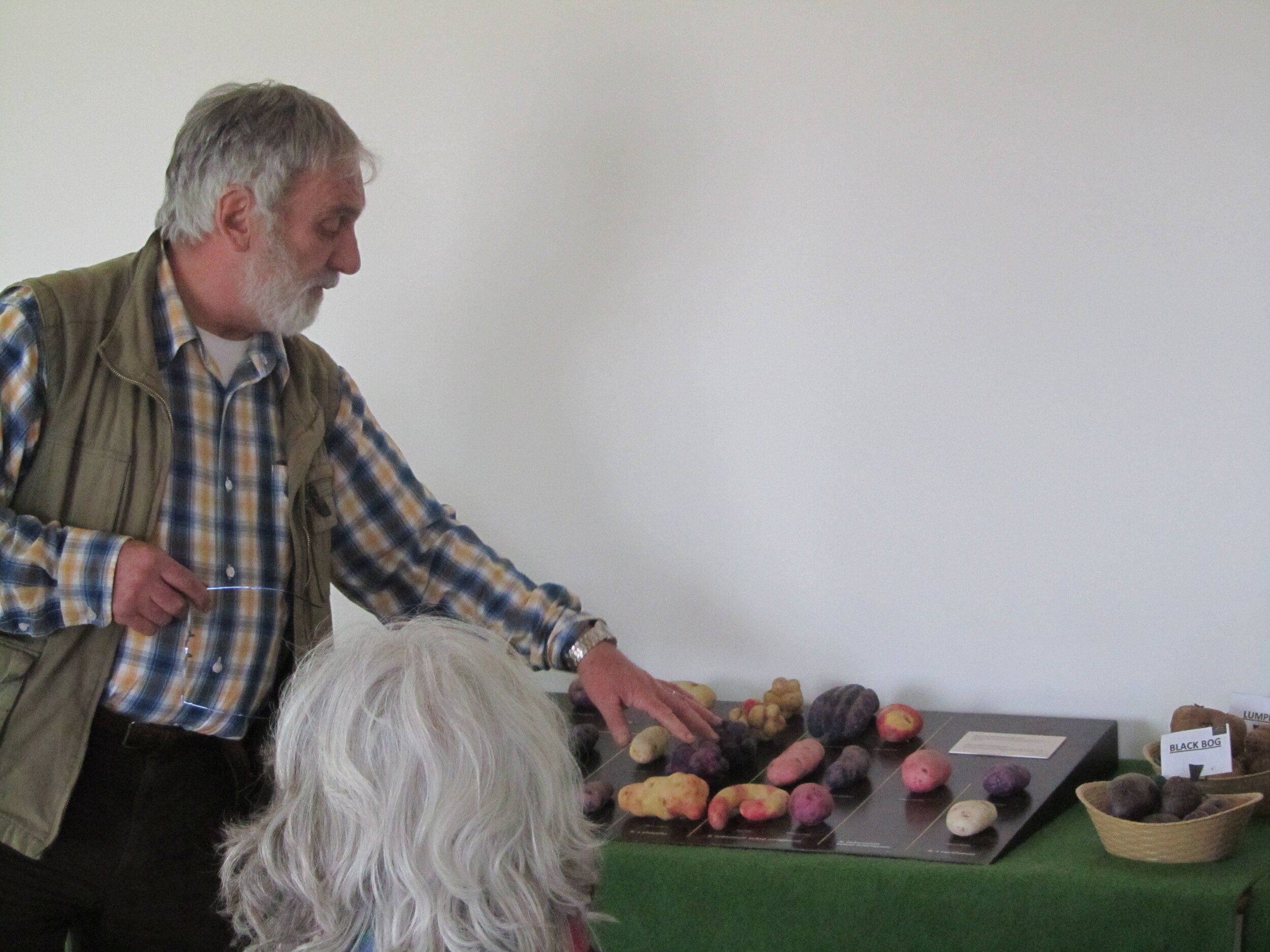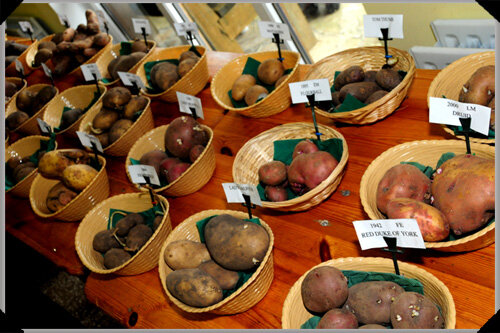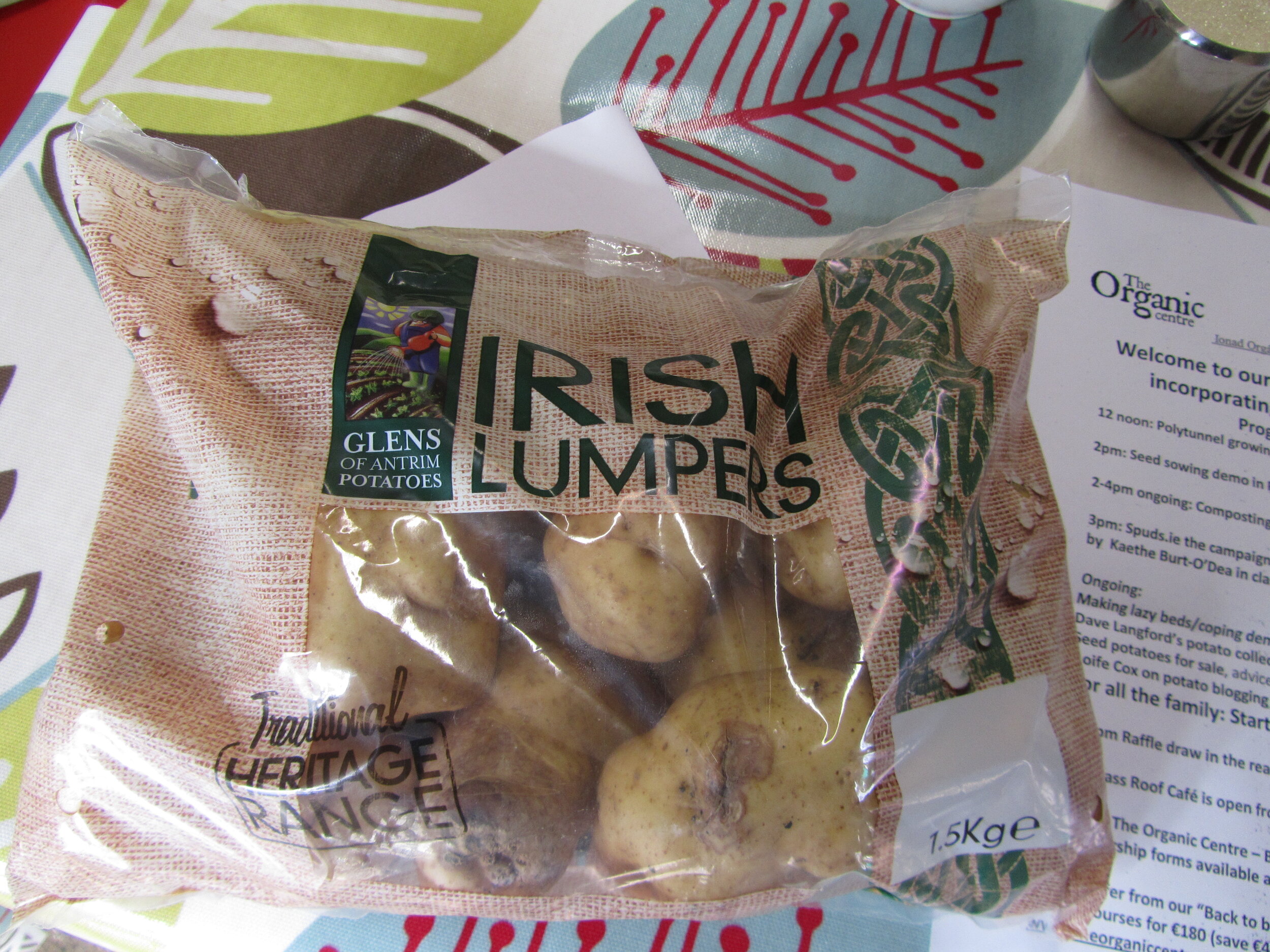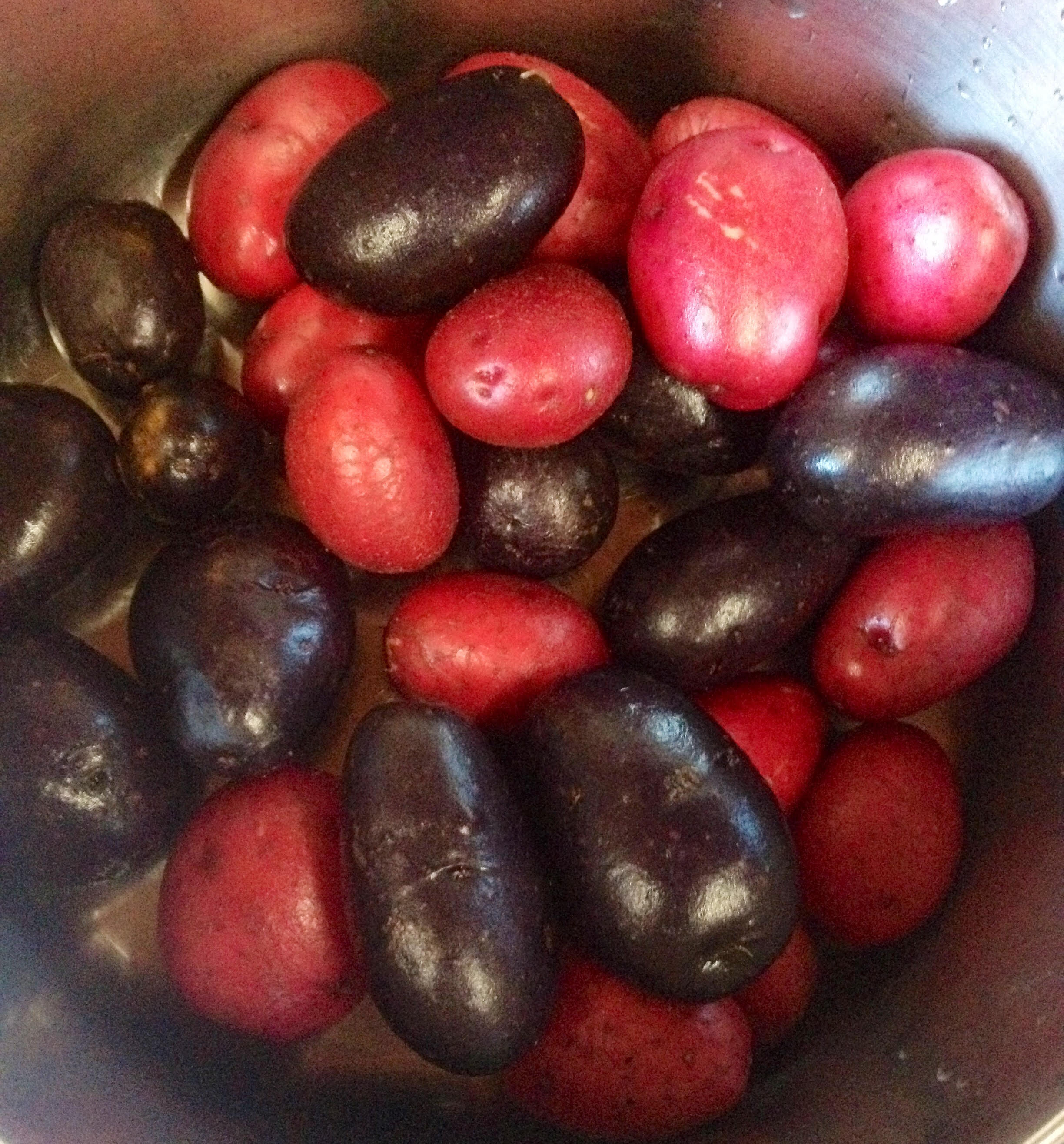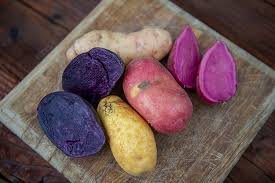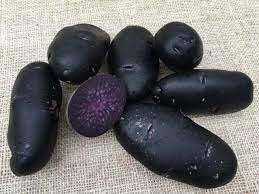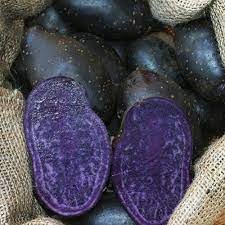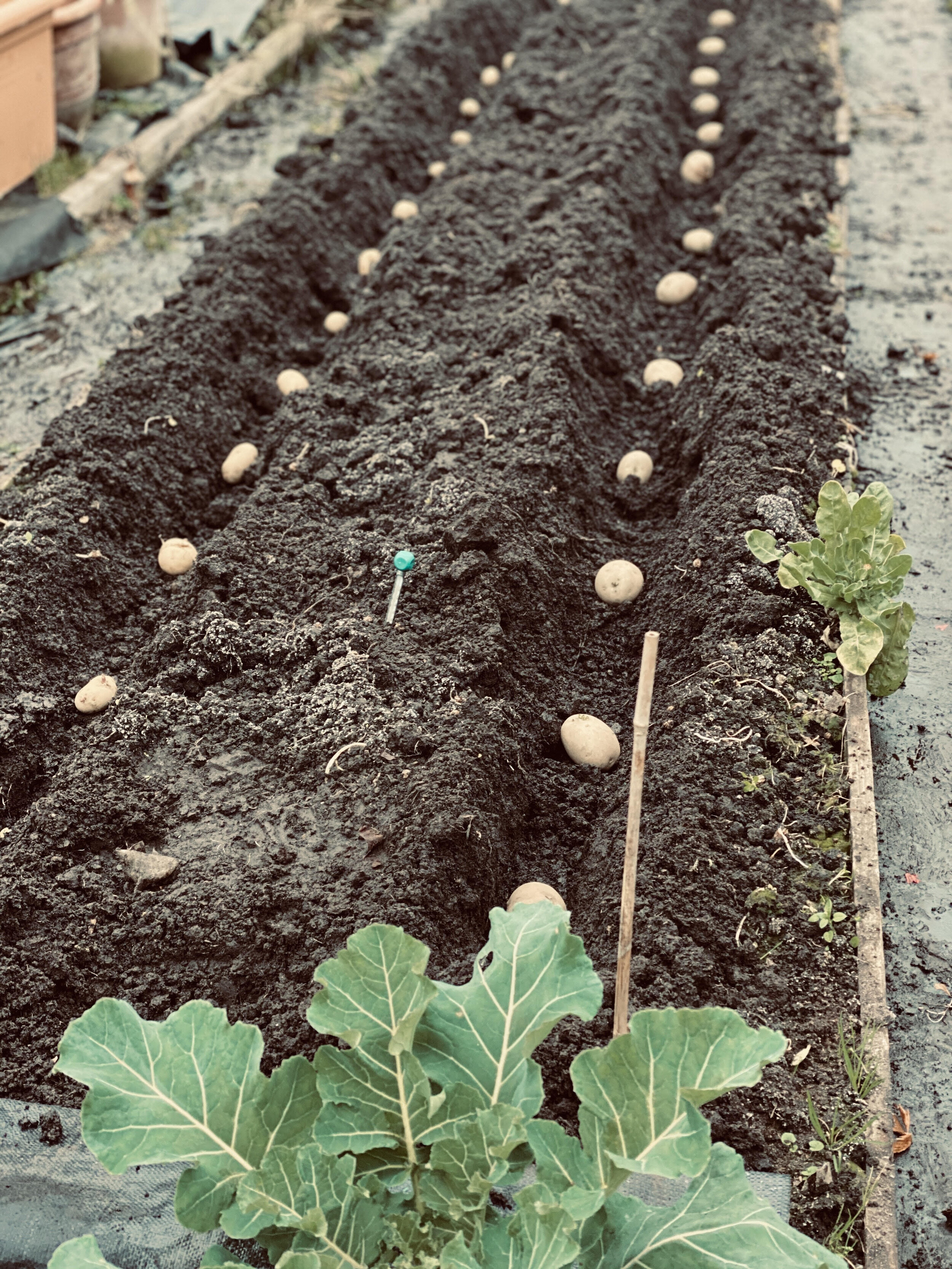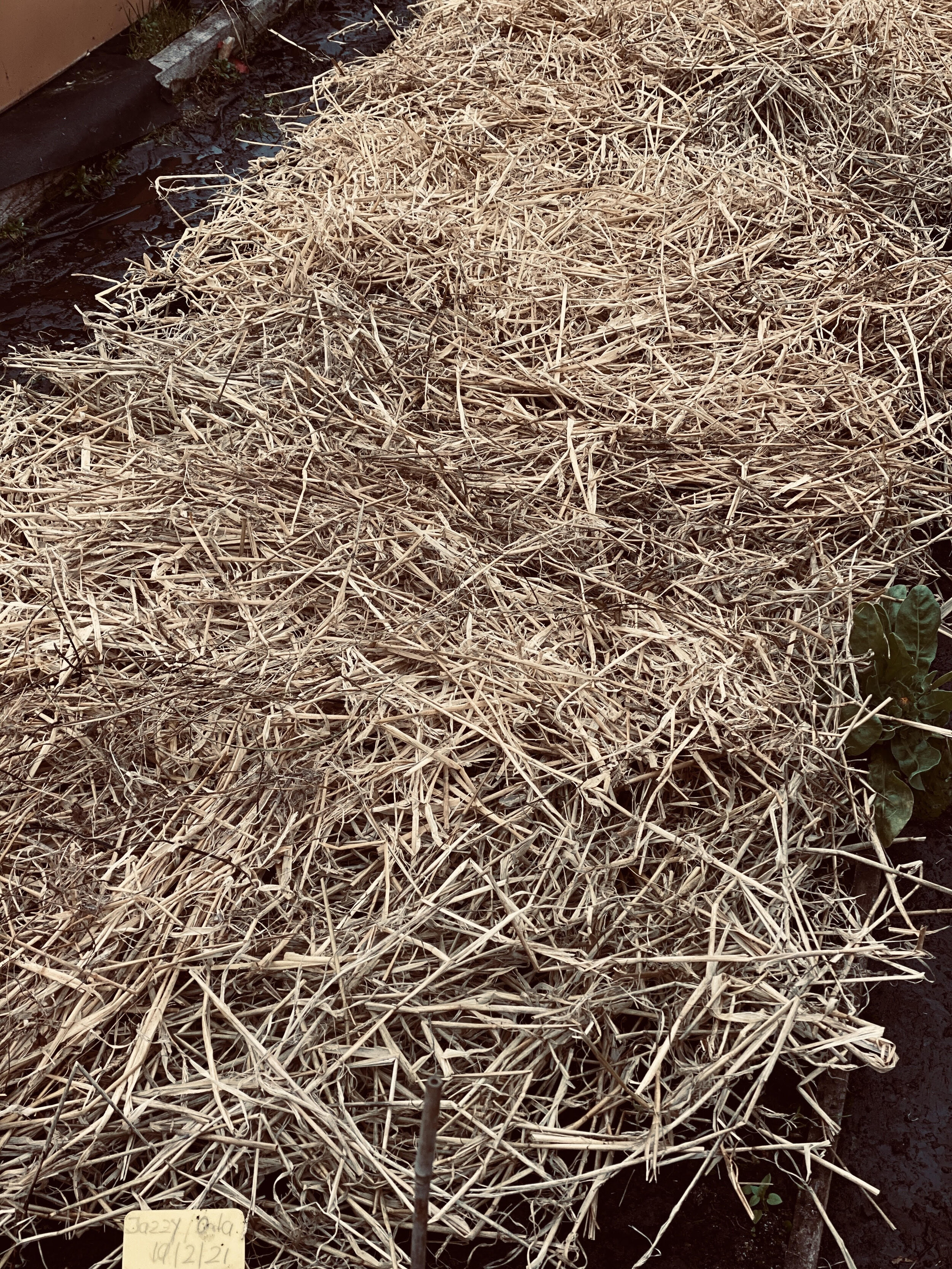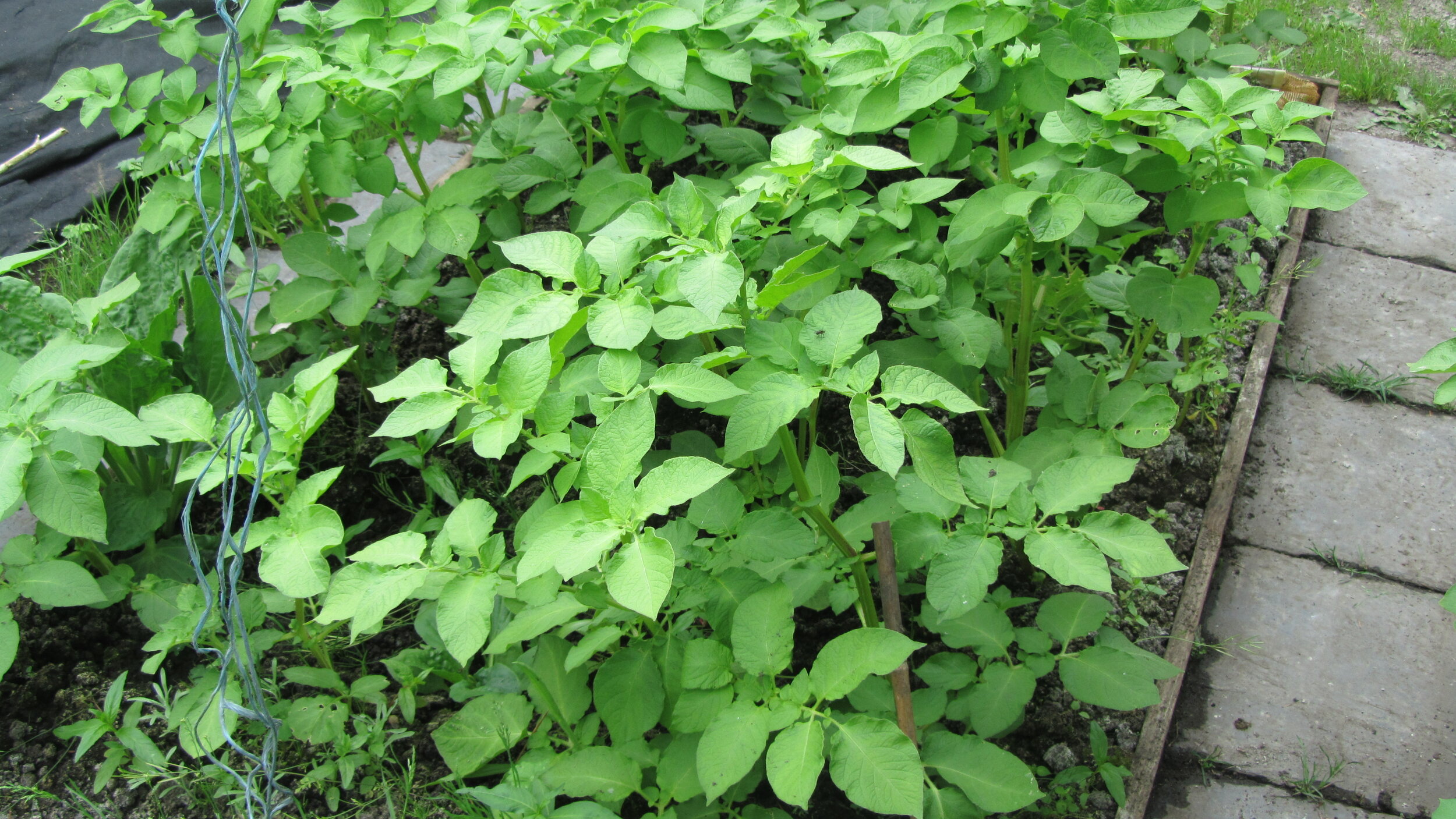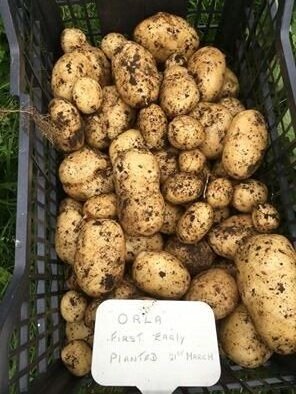Potatoes for your plot -2024
Maris Piper - ideal for roasting
Lucy Madden in her great book “The Potato Year – 365 ways of cooking potatoes”, published in 1997, calls the potato “the most democratic of vegetables”, because it is so widely available.
“Rise in potato prices expected in 2024” reported the Tuam Herold in November of last year.
“The harvest has been so bad that the price of a bag of potatoes will almost certainly have to increase in 2024 because of an upcoming shortage in supply.”, the article read. Some predicted a shortage in seed potatoes and urge to save your own. And searching for seed potatoes online reveals that many varieties are out of stock.
Why it makes financial sense to grow your own potatoes (-if you can!).
Last January the UK Farmers Weekly announced that “potato growers face a cost structure challenge.” Another newsflash said that potato prices are 67% higher now than 2022.. The same year when according to Bord Bia the potato consumption among different age groups in Ireland decreased, especially amongst the 18 to 34 year olds, the so-called millennials. Bord Bia ran a media campaign “Potatoes - Prepare to be Surprised”, which was “designed to fill the gaps in cooking knowledge for younger consumers”. At the same time, even before the Covid pandemic, a new surge in home growing had begun and there was a huge new wave in gardeners all over the country growing their own potatoes, especially early varieties.
In the last years we have shifted our focus on varieties that are not easily available from local growers or markets, especially red and blue varieties and early salad potatoes. In 2022 we grew Charlotte and Vitabella in the polytunnel and Salad Blue, Purple Rain and Purple Majesty in the outside garden. Our selection for 2023 was Vitabella (early) and Lili Rose (early) in the polytunnel and Alouette (2nd early), Twister (2nd early), Purple Rain (early) and Sevilla (main crop) in the outside garden. We especially liked the taste of Alouette and will grow them again this year along with Vitabelle and the blue Vitanoire outside and Red Duke of Yorke and Purple Rain in the polytunnel.
The question of all questions: How many?
Before we even talk about how to plant potatoes and when, let us discuss the question: How many potatoes do I need to plant to feed a family of four for a year? According to an article in the Irish Times (Oct 6th, 2017) the average annual consumption of potatoes is at 85kg per person in Ireland. If one square meter yields on average 5kg you need about 17 square meters for one person and about 68 square meters for a family of four. Richard Leighten in his book “Gardening through the year” says: “40 potato plants will provide you with a potato based meal two to three times a week.” Klaus Laitenberger in his book “The Self-Sufficient Garden” says “A total of 32 square meters produces 168kg of potatoes or around 3.5kg per week for 11 month.”
So if you (nearly) need to be a farmer or have a huge garden to be self-sufficient on potatoes, why not - as a gardener - free yourself from such calculations. Which means in our humble opinion, buy the bulk of your potatoes from an organic farmer at a market and grow what you cannot buy or what is expensive to buy: Early potatoes, purple potatoes, disease and blight resistant varieties, rare and special varieties and heirloom varieties.
If you grow your potatoes as part of a four year rotation in your garden you might not have more than one or two beds available in any case. So make the best and most exciting use of that limited space. At Neantog for example we grow waxy varieties or salad potatoes for one simple reason: Kartoffelsalat (potatoe salad)! We also grow purple and blue varieties, which are hard to get and we grow early potatoes in the polytunnel, because there is simply nothing better than early spuds with butter and a pinch of salt! There is that unbeatable flavour and texture to a new potato that has travelled from earth to pot to plate in fifteen minutes.
Potato Revival
Even before the Covid-19 pandemic the last ten years have seen a remarkable revival of public interest in potatoes and potato days and festivals all over Europe have become big crowd pullers. The Organic Centre in Leitrim ran its first ever annual Potato Day in March 1997 and Dave Langford (pictures above) and Dermot Carey had been on the forefront to promote old and new potatoes, often displaying 180 plus varieties. There is a huge number of new and heirloom varieties available each year with blight resistant varieties becoming very popular for home growers.
There is also the novelty of purple, red and blue varieties becoming available in the last few years championed by Maria Flynn from Ballymakeeny Farm in Co. Louth . Married to a potato farmer but not satisfied with roosters or queens, Maria saw a niche in the market just waiting to be filled and her first foray into growing began in 2015 with the Violetta variety, completely purple throughout. The deeper and richer the color, the more nutritious the content of vegetables tends to be. The purple potato is rich in the antioxidant that is characteristic of deeply coloured blue or purple produce called anthocyanin, also found in blueberries is reputed to have immunity boosting properties. They are also proving increasingly popular with some of Ireland’s top restaurant chefs.
Above from left: Ballymakenny potatoes, Purple Rain, Violetta and new blight resistant varieties.
Potatoes are easy to grow
One of the reasons for the growing popularity of potatoes is that they are fairly easy to grow and make a good crop for beginners and newly established gardens. Another reason is that they can be grown outdoors and indoors in polytunnels or glasshouses and in barrels, tyres, tubs, grow bags, beds and fields.
Even the new strains of potato blight that can strike at lower temperatures and can survive in soil cannot diminish the popularity of the humble spud. The only slight shift is that more and more people now grow early varieties and many grow in polytunnels thus trying to avoid the blight problem. Also it seems that the initial negative reaction to the blight resistant Sarpo varieties is waning and more people like to eat them.
Potatoes are a good source of Vitamin C
For health, potatoes beat pasta, rice and bread. They contain something that these other starchy foods do not have: Vitamin C. A portion of potatoes, boiled in their skins, contain half your daily requirement of vitamin C, as well as high-grade protein, fibre, vitamin B and minerals. Potatoes contain no fat and are low in calories and salt. They also release serotonin in the body, a chemical that gives a sense of wellbeing. I think many of us could recount the feelings of happiness that follow a plate of hot buttery potatoes. The potato is a perfect package of health and sustenance.
Seed Potatoes
Varieties – the difference between Early and Maincrop
Potatoes are grouped according to the average number of days it takes to reach maturity, the following is a rough guide.
Earlies: 90 days
Second earlies: 110 days
Maincrop: up to 135 days
Late maincrop: up to 160 days
If it comes to varieties it probably boils down to personal taste as well as cultural backgrounds. Germans love potato salad, thus grow waxy varieties like Sieglinde or Nicola that can be sliced, Irish people love floury potatoes and most popular are Roosters. The French love the waxy Fingerling and Italians Patata de Bolognia.
Lucy Madden in her aforementioned book has the best varieties for boiling, roasting, Jacket baked, pureed, deep fried and salads.
When to plant?
Potatoes from any group can be planted at any time, e.g. earlies can be planted late and maincrops early. According to an old Irish saying that I learned from a neighbour in 1987 “You can plant potatoes as long as you can look through an Ash tree!” and that could mean planting late April, early May depending on weather conditions. The soil needs to have warmed to at least between 8 and 10C before planting makes sense. Don’t buy into the myth of planting has to be done on Saint Patricks Day use a soil thermometer instead.
Earlies are best grown if space is limited, they also give the quickest return and are less susceptible to blight and other diseases. They can be grown as a first crop in polytunnels from February and can be harvested at the beginning of June to make way for other crops like peppers or French beans.
How to plant?
Potatoes can be grown as a pioneer crop in new gardens to break and improve the soil. They can be grown on a wide range of soils, but deep, fertile soil, manured the previous autumn or winter gives best yields. Choose an area of your garden that gets sun and is not in a frost pocket. Potatoes are not fussy about soil type, but avoid planting in areas prone to water logging. Dig a shallow ten centimetre V-shaped trench. Add, if you have it, some well composted manure and sow the potatoes on top with any shoots pointing upwards. Alternatively, use a trowel to make a 10cm (4 in) deep hole for each potato, putting some compost or manure in each hole, then the seed potato, and covering over with soil.
Spacing: Early potatoes: 25cm between plants and 50cm, between rows.
Maincrop potatoes: 30 cm between plants and 70cm between rows.
the loy is a very special tool for making lazy beds, where sods of grass are sliced on three sides and hinged over to make a ridge for planting
Very popular is the lazy bed method: This involves laying out a line of manure or compost a foot wide, placing potatoes along it at 30cm intervals and flipping sods of earth on top of them, using a spade, ideally a loy (see picture). In this way a patch of lawn can be converted to a potato garden in a couple of hours. Each seed potato planted will produce on average 8-10 potatoes, depending on variety.
Watering the right way
They are a thirsty crop and adequate watering has a huge impact on yield and quality. This is especially important, if they are grown in polytunnels and need watering 2 to 3 times a week, ideally in the morning. Water early varieties grown outside in dry conditions once a week, main crops generally don’t need watering, except on very light soils. Potato expert Chris Bird from England says: “The key time to water is just before the foliage canopy closes over between the rows. If you water at this time, you will get the best response from the potatoes and they will bulk up well. You don’t need to water regularly, as this will only serve to encourage slugs.”
Organic gardener Joy Larkcom recommends “one heavy watering” at a rate of around 25 litres per sqm when the new potatoes are the size of marbles. You can also feed the plants by adding liquid seaweed. Growing in barrels or bags need regular watering!
Potatoes and Blight
Potato blight (Phytophthora infestans) is definitely one of the most severe and serious plant diseases caused by a fungal agent that can spread extremely fast during moist, warm conditions. “The best indication for ‘blighty’ weather are midges”, says Michael Kelly from GIY. So watch out for those overcast, warm, humid days in summer. The farming weather forecast is also worth listening to for blight warnings.
If it comes to growing potatoes there are in my opinion two ways to deal with blight, firstly growing early varieties that can be harvested before blight sets in from June onwards, secondly growing blight resistant varieties like the Sárpo potatoes. They were first bred in Hungary by the Sárvári family. Their work has continued through the Savari Research Trust in Wales, which looks for blight-resistant varieties of potatoes (and tomatoes!). Sárpo Mira has fast become a favourite for home growers, along with its sister, Sárpo Axona. These are red late main crop potatoes. They are also virus-resistant, unmarred by slug damage and don't mind drought. Plus, they have a long dormancy period so they store incredibly well. There is also Sarpo Una (second early) and Sarpo Shona (early maincrop).
Orla, Carolus, the Irish bred Setanta, Blue Danube and Lady Balfour are all good blight resistant varieties.
Top tips for great spuds:
Dip seed potatoes into soot when you plant to protect against slugs. Use slug resistant varieties like Desiree and King Edward.
Put a layer of fresh grass clippings in the bottom of the drench before planting. It’s been proven to reduce scab problems.


